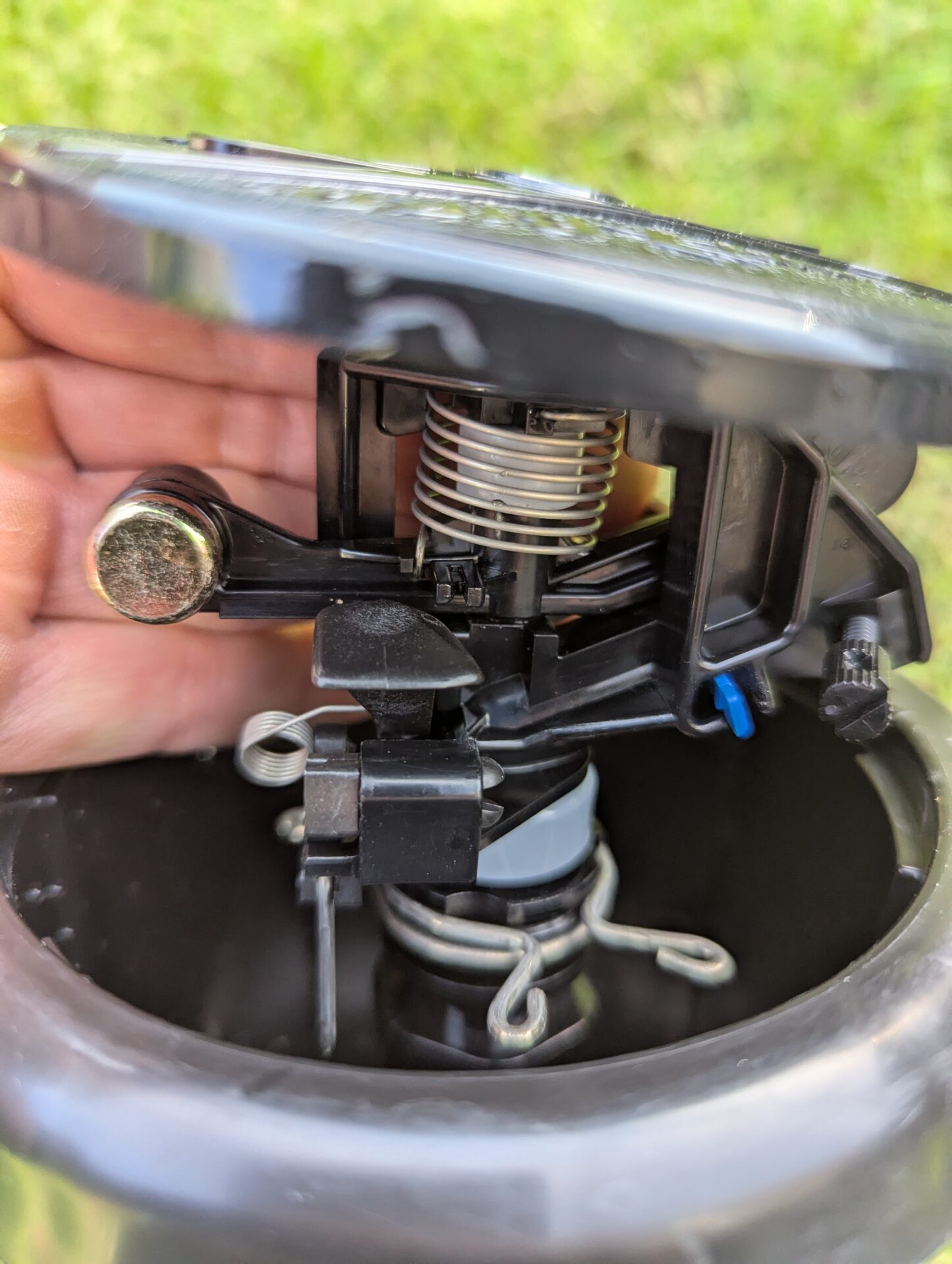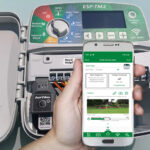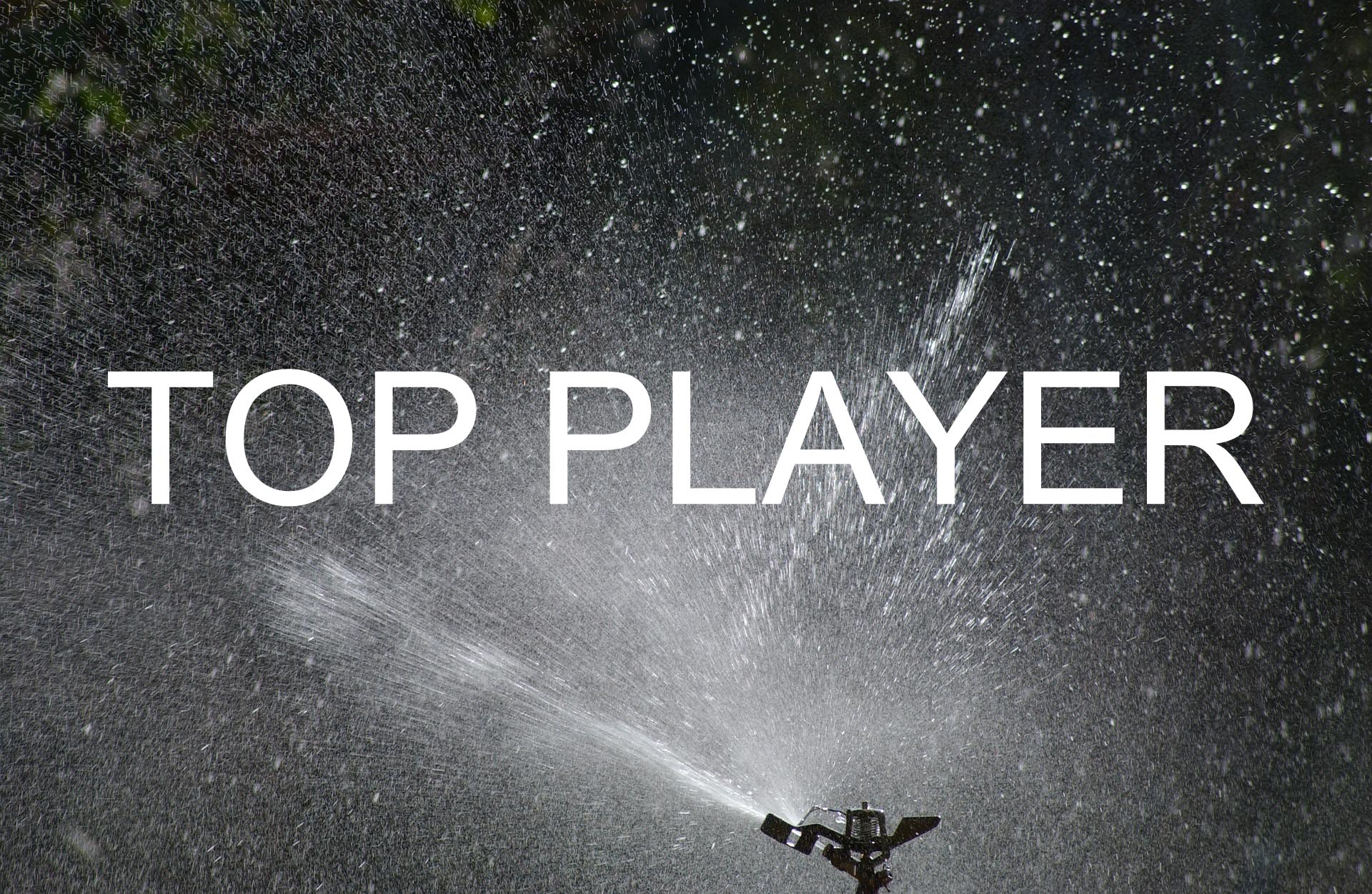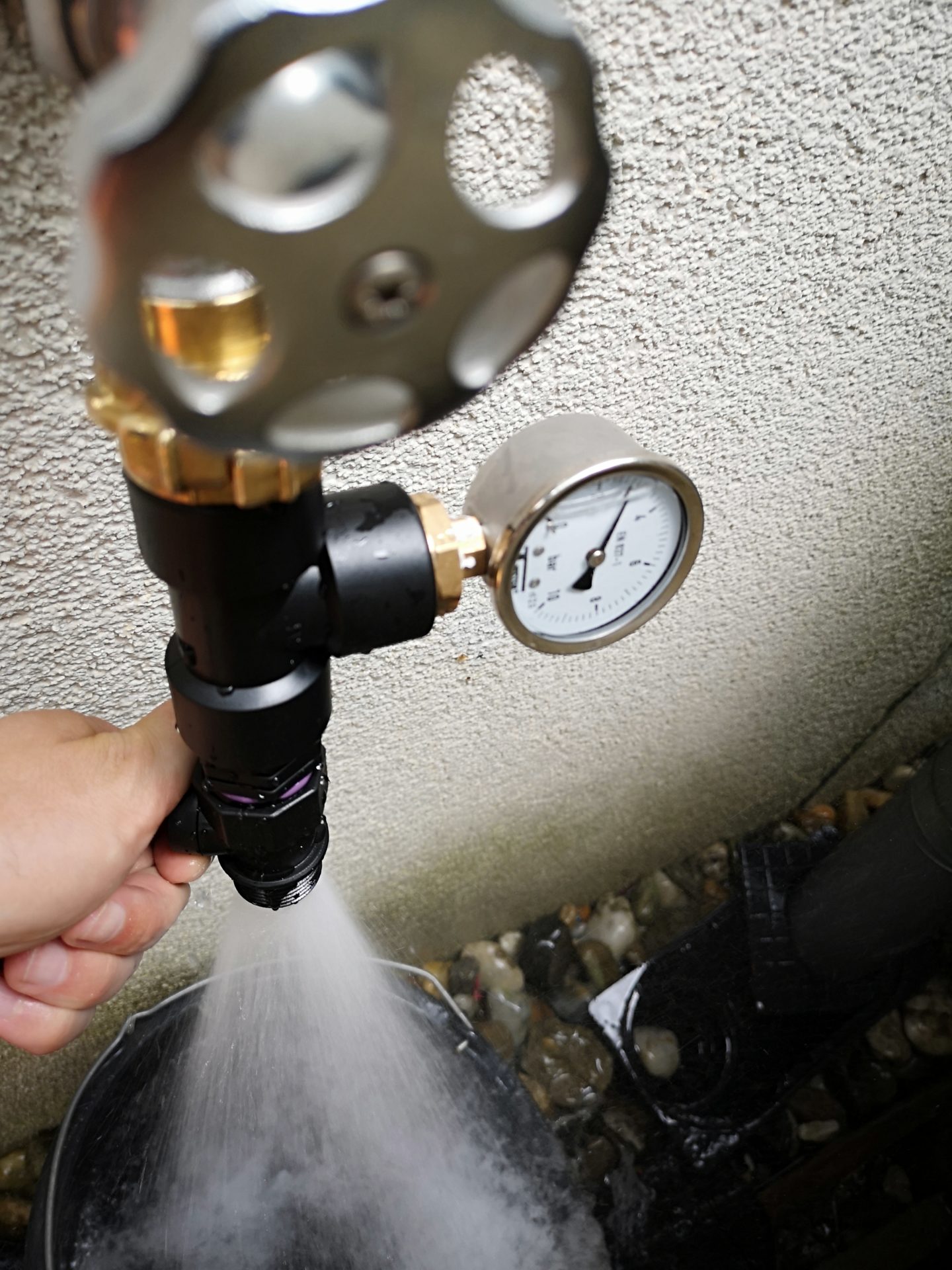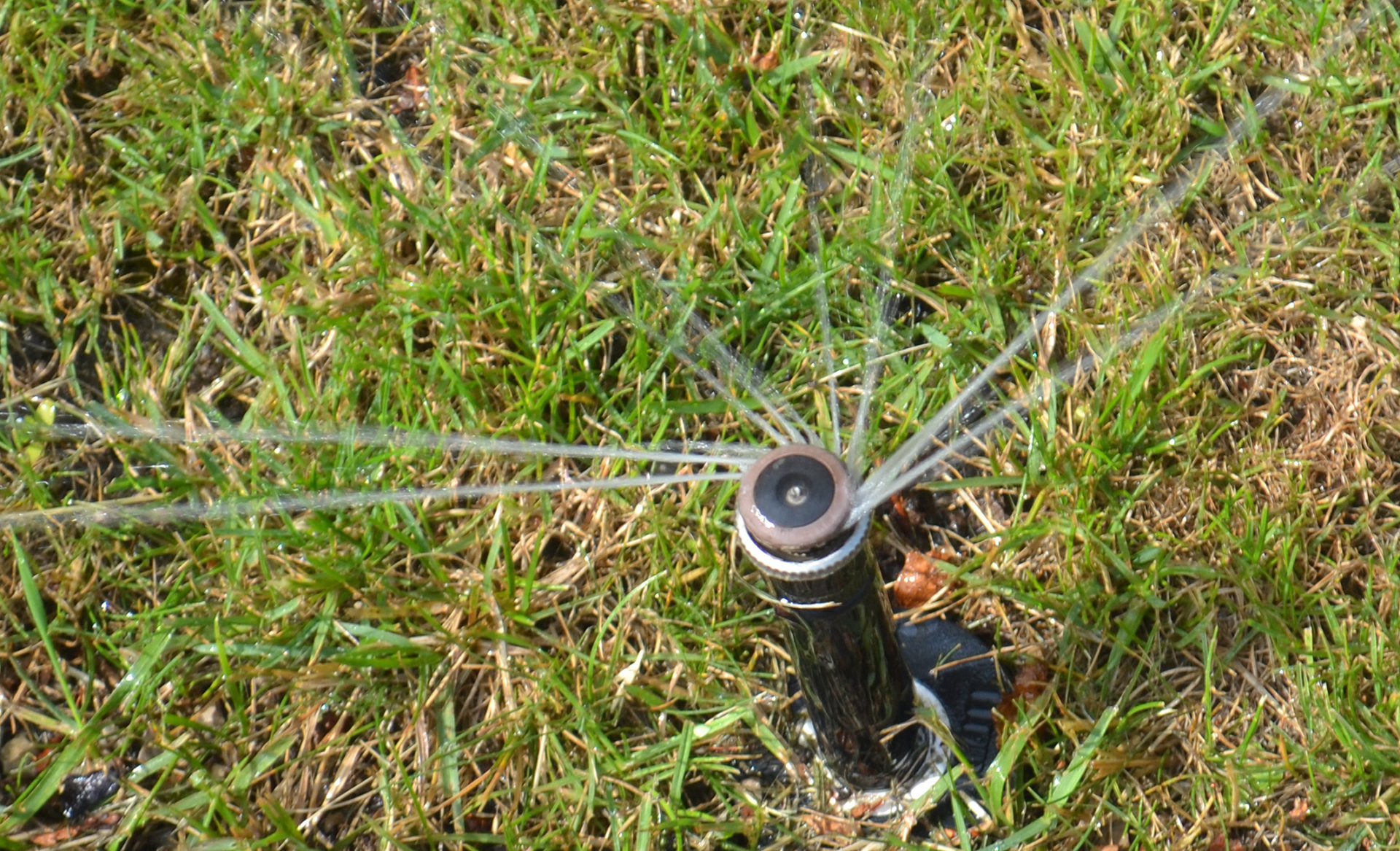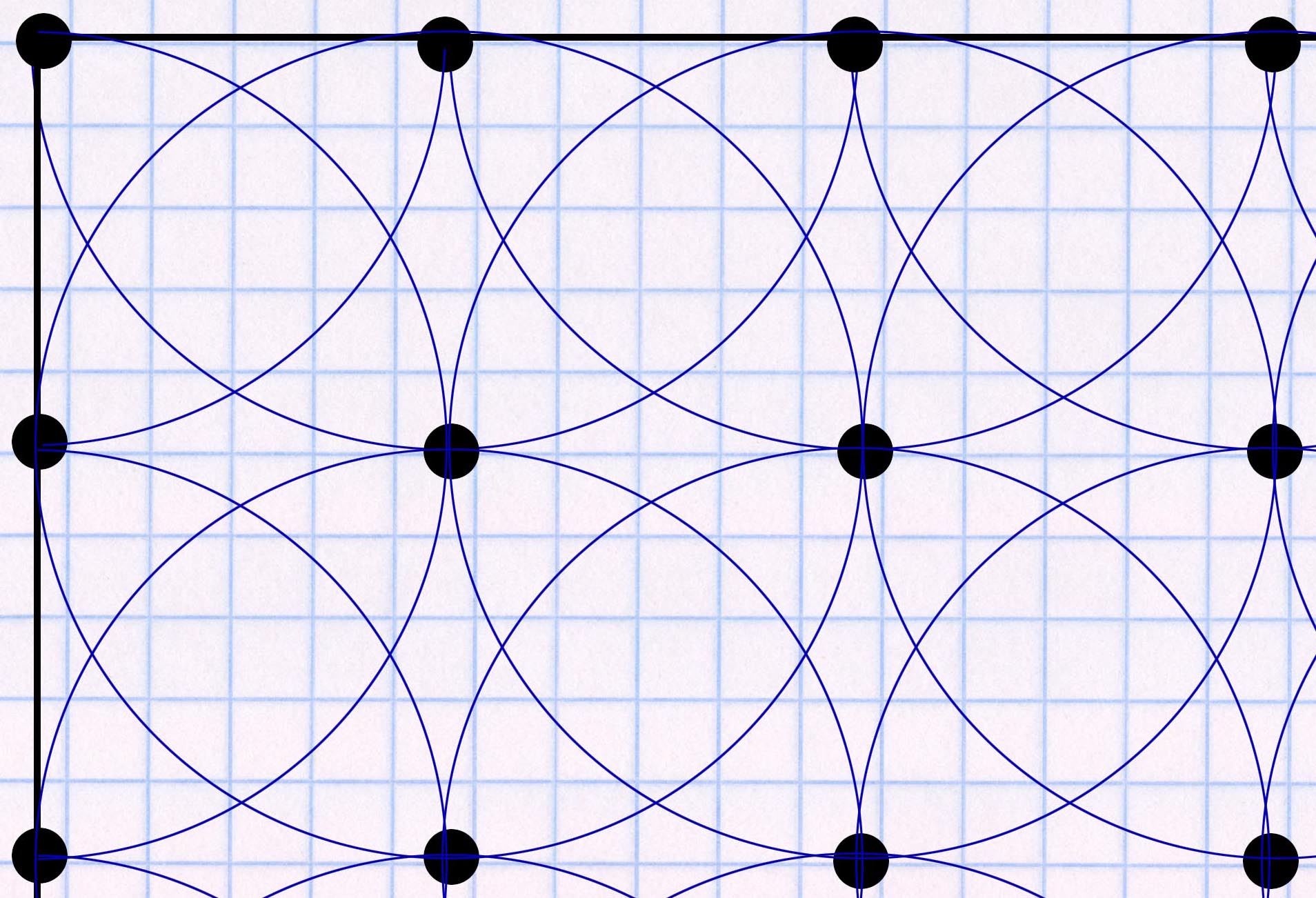Among the sprinklers available on the market, the Rain Bird Maxi Paw has a unique selling point: it’s the only pop-up impact sprinkler I know of. Impact sprinklers have largely disappeared from private gardens in recent decades with the rise of gear-driven sprinklers. However, they can still be a viable alternative in challenging water conditions. In this article, I’ve taken a closer look at the Rain Bird Maxi Paw.
What are impact sprinklers?
Impact sprinklers are the sprinklers many people remember from their childhood. Impressive devices with a powerful spray, usually mounted on a tripod, they made quite a bit of noise when operating and sprayed a lot of water in the immediate vicinity. This last point made them particularly popular with children, as they could stand next to them in the summer and enjoy a pleasant cooling spray.
This water distribution is achieved by the jet separator, a usually rod-shaped barrier mounted in front of the nozzle. The water shooting through the nozzle hits the jet separator and deflects it to the side. A spring then returns the jet separator to its original position, where it is struck by the jet again. Each deflection causes the sprinkler to rotate a small amount. The impact of the jet on the jet separator creates the characteristic tapping sound of this type of sprinkler and distributes the water in the immediate vicinity.
When is an impact sprinkler necessary?
Impulse sprinklers are still commonplace in agriculture. However, they have become rare in private gardens. Gear-driven sprinklers, sprayers, and rotators have gradually replaced impact sprinklers. These offer several advantages over impact sprinklers: They are significantly quieter, provide more even watering, and are easier to adjust.
The first point is particularly important, as private gardens are usually built right up against the neighbor’s fence, and the impact noise of a sprinkler can be quite loud and perceived as disruptive. Modern gear-driven sprinklers aren’t completely silent either, but they produce a quieter and much more consistent sound.
Therefore, aside from nostalgia, there’s currently no real reason to opt for an impact sprinkler. With one exception: If you only have slightly dirty water available for irrigation, containing sand or sediment, then an impact sprinkler can be a welcome solution!
Gear-driven sprinklers struggle with such conditions, as their gears can become clogged and quickly stop functioning correctly. This is usually solved by using a filter to ensure the water is clean before entering the pipeline. However, with very fine sand, algae, or organic contaminants, this can be difficult and expensive, and may also require a relatively high water pressure.
This explains why the Rain Bird Maxi Paw continues to hold its own in the Rain Bird product range: as a virtually indestructible, robust workhorse, its exposed mechanics and straightforward, simple design make it relatively insensitive to harsh conditions, and it performs reliably even in challenging environments. And I only recommend using it for this specific application; otherwise, a modern gear-driven or rotary sprinkler is a better choice!
Rain Bird Maxi Paw Under the Microscope
What immediately stands out about this sprinkler is its comparatively enormous size. This applies not only to the cap, which has a much larger diameter than other sprinklers, but also to the sprinkler itself.
The relatively large height might make connecting it to the pipeline a bit more difficult. However, the Maxi Paw addresses this by providing not only the standard 3/4-inch connection at the bottom, but also an optional 1/2-inch connection on the side. To use the latter, simply unscrew the plug from the side connection, thus sealing the bottom connection. Even if it doesn’t look like it at first glance: The plug is large enough for this, as the 3/4 inch connection at the base of the sprinkler tapers inwards.

Size comparison of Rain Bird Maxi Paw with Rain Bird 3500 gear-driven sprinkler
Variants
The full name of the sprinkler is Rain Bird Maxi Paw 2045. The 20 indicates the minimum throw distance of 20 feet, and the 45 indicates the maximum throw distance of 45 feet. One or more letters follow to distinguish the four variants:
- 2045A – The standard model
- 2045A-NP – Same as above, but with a purple cap instead of black, indicating the use of grey water
- 2045A-SAM – With an additional Seal-A-Matic check valve, which prevents puddles from forming when used on uneven terrain
- 2045A-SAM-NP – With a purple grey water cap and Seal-A-Matic check valve
The “Maxi” in Maxi Paw is there because there was previously a smaller model called the Mini Paw. This model has since been discontinued.
The sprinkler is available with a total of 7 different nozzles. The five nozzles 06, 07, 08, 10, and 12 allow for smaller or larger water flow rates and throw distances, respectively. The two nozzles 07LA and 10LA are low-angle nozzles that distribute the water at a shallower angle than the other nozzles. This can be advantageous in areas with strong winds.
Key data Rain Bird Maxi Paw
Table could not be displayed.Adjustment
Adjusting the sprinkler isn’t rocket science. However, compared to modern sprinklers that make it very easy, it’s still a bit more challenging. You can adjust the irrigation sector (either a full circle or a setting from 20 to 340 degrees) and the throw distance using the adjustment screw (according to the manufacturer, a reduction of up to 25% is possible). The nozzles can also be changed.
A special adjustment tool is sold for the Maxi Paw sprinkler, which helps you pull out the riser and lock it in place. This is convenient and certainly not a bad idea if you have many sprinklers to adjust, but the adjustment can also be done by hand or with simple tools.
To pull out the riser, you need a very narrow tool, such as a very flat screwdriver or a flat spatula, to reach into the gap between the riser and the body and pry and pull it out. Instead of using the special adjustment tool to secure it, you can simply hold it in place with your own muscle power and make the necessary adjustments.
Moving the adjustment loops to set the irrigation sector and turning the deflector screw to reduce the spray distance requires no tools; this is done by hand. Changing nozzles is also easy: simply twist them 90 degrees, pull them out, and reinsert them in the same way.
- Using a flat tool, you can loosen the cap and then use the cap to pull out the riser.
- Afterwards, settings can be adjusted or the nozzle can be changed.
Alternatively, the settings can be adjusted during actual operation, once the sprinkler is supplied with water and extends automatically. This saves you from having to hold the riser, but you shouldn’t mind getting wet, as it’s quite easy to do so.
Personal Impression
What immediately stands out, especially if you’re used to gear-driven or rotary sprinklers, is the forceful spray pattern. It feels significantly less elegant and refined than what you’re used to, but in my opinion, this isn’t a drawback for the intended application, as it explains why the Maxi Paw is much less affected by dirty water. The water is channeled through so directly and efficiently that no dirt can remain in the sprinkler.
In my test, the sprinkler function worked flawlessly. I also found the settings straightforward, and you don’t really need the additional adjustment tool. Simply use the metal adjustment loops to define the area to be irrigated, and you’re good to go. You only need to adjust the limit screw if you need to reduce the spray distance. I also tried changing the nozzle, which is equally simple. Just turn the nozzle 90 degrees and remove it. Then place the new one on top and turn it back 90 degrees to lock it in place.
With the available nozzle set, a matched precipitation rate across multiple sprinklers (MPR) is also possible. A pressure-regulating body is not offered for the Maxi Paw.
The noise level is significantly higher than with gear-driven or rotary sprinklers; it sounds a bit like the rattle of a machine gun. If you or your neighbors are sensitive to noise, an impact sprinkler is not ideal. To give you an idea, I’ve included a short video below showing the sprinkler operating for a few seconds and the noise it produces.
Video of the Bird Maxi Paw in action
In my experience, the Maxi Paw sprinkler irrigates more intensively in its immediate vicinity than gear-driven and rotary sprinklers, which only irrigate very weakly in this area. This would be a factor if the Maxi Paw were used as a standalone unit. In practice, however, impact sprinklers, like gear-driven and rotary sprinklers, should also be used in conjunction with other sprinklers in a square pattern or triangular pattern. This ensures that any uneven watering of one sprinkler is compensated for by the neighboring sprinklers.
In conclusion: If you have a choice, you don’t need to opt for the Maxi Paw, as there are now more modern and better sprinklers on the market, and it does have certain drawbacks. However, for heavy-duty work in difficult water conditions where other sprinklers fail, it is a well-functioning alternative! The sprinkler reliably does what it’s supposed to and, while not quite as easy to use as some other sprinklers, is still quite simple to operate. One drawback is the relatively large area it occupies in the lawn and the somewhat higher operating noise.
Where to buy
The sprinkler is available for around 20 dollar in garden centers, specialist shops and on Amazon (link to product).



